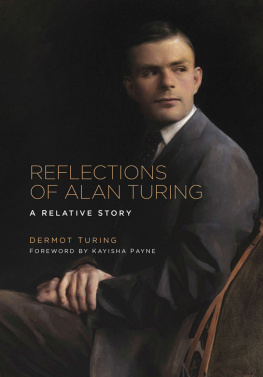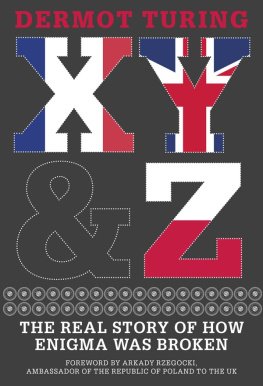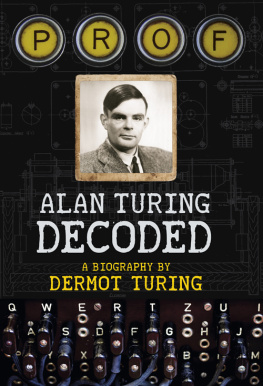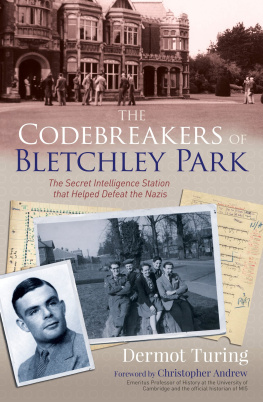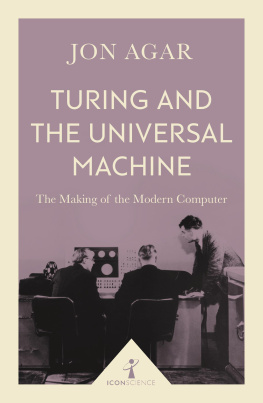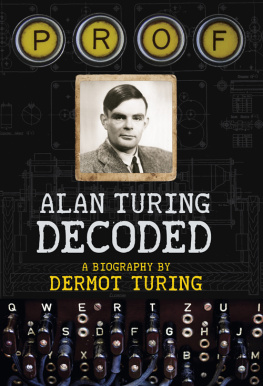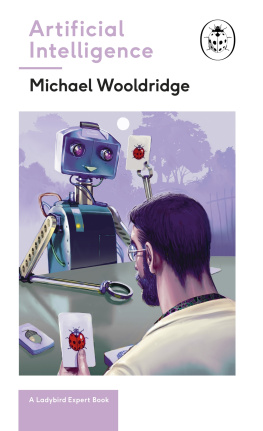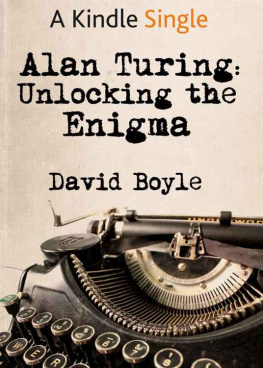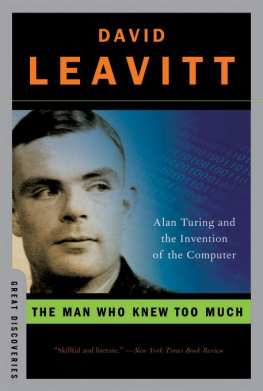Contents
Guide


First published 2021
The History Press
97 St Georges Place, Cheltenham,
Gloucestershire, GL50 3QB
www.thehistorypress.co.uk
Dermot Turing, 2021
The right of Dermot Turing to be identified as the Author of this work has been asserted in accordance with the Copyright, Designs and Patents Act 1988.
All rights reserved. No part of this book may be reprinted or reproduced or utilised in any form or by any electronic, mechanical or other means, now known or hereafter invented, including photocopying and recording, or in any information storage or retrieval system, without the permission in writing from the Publishers.
British Library Cataloguing in Publication Data.
A catalogue record for this book is available from the British Library.
ISBN 978 0 7509 9707 2
Typesetting and origination by The History Press
Printed and bound in Great Britain by TJ Books Limited, Padstow, Cornwall.
eBook converted by Geethik Technologies

CONTENTS
ACKNOWLEDGEMENTS
In some ways, this is an unconventional book, and bringing it to life would not have been possible without the support and contributions of many people.
Foremost, I must thank Laura Perehinec of The History Press and Katie Read of Read Media for nurturing the idea from the beginning and helping shape it. Inspiration has come from many sources: the blog of Margaret Makepeace at the British Library pointed me to the story of John William Turing; Edith and Florence Stoney now have their own biography by Adrian Thomas and Francis Duck, from which I learned a great deal; Professor Juliet Floyds writings on Alan Turing in connection with philosophy have deepened my understanding of his work; and Dr James Peters gave me access to the new Alan Turing archive at Manchester University, which I have drawn on extensively to interpret Alans final years and his relationships with colleagues and correspondents. Also in Manchester, the discoverer of the new Turing papers Professor Jim Miles not only gave his encouragement but also told me about Alan Turings calculating machine. In Cambridge, and notwithstanding the problems of lockdown, Dr Patricia McGuire arranged the spectroscopic imaging of correspondence redacted by my grandmother so we could try to find out what she wanted to hide; I am in debt to the Provost and Scholars of Kings College, Cambridge, and to Maciej Pawlikowski for making that possible.
In the United States, I was able to find out about the secret Army Bombe project with the help of Dr Philip Marks and the ever-helpful staff of the National Archives Records Administration. The cover image of Alan Turing is also an American creation: commissioned by Princeton University and painted by Jordan Sokol, it is a stunning addition to the iconography and I am grateful to them both for allowing it to be used here. A different approach to art is taken by Justin Eagleton whose quirky and imaginative images allow us to look at Alan Turing in new ways: thanks to him as well for being involved in the project. Others whose various contributions have guided me along the way include Rachel Hassall, Andrew Hodges, Serena Kern-Libera, Kriti Majan, Jezz Palmer, Jonathan Swinton and Colin Williams: thank you to you all.
A special thank you is due to Kayisha Payne for being involved in the project and for all the work she is doing to advance the prospects of young black people in science, technology, engineering and mathematics.
Quotations from Alan Turings letters, located in the archives at Kings College, Cambridge and the University of Manchester, are made possible with the kind permission of the Provost and Scholars of Kings College, Cambridge. Quotations from Beatrice Worsleys letters in the Manchester archive are made with kind permission of Alva Worsley.
FAMILY TREES


FOREWORD
BY KAYISHA PAYNE
As a young Black woman studying for a masters degree in Chemical Engineering at university, I knew what it was to feel different. I was amongst a minority of woman on the course and an even smaller minority being Black. This was the year 2017 around sixty-three years after Alan Turing lived and worked yet many aspects of his story resonate with my experience.
Alan was most famously known for his intellect but, as with every person, there is so much more beneath the surface. The complexities of our lives are often hidden behind our achievements and successes but are equally as important; they are the context of our story. This book unearths many aspects and influences in Alans life; the one which resonates most with me is his experience of race, which is the basis of my non-profit-organisation, BBSTEM Black British Professionals in STEM.
The idea for BBSTEM came about whilst I was still studying. By chance I was introduced to a Black British chemical engineer and, as we spoke, I was inspired by him and the story of his career journey. I had never met another Black person in the same field as me. Afterwards I reflected on this meeting and how much value could be gleaned from a meeting that happened accidentally; imagine what could be achieved if a specific community was created with a purpose to help Black people see themselves in scientific and engineering roles as a career, and have a forum where they could ask questions without any judgement? I founded BBSTEM with the aim to encourage, enable and energise individuals in business, industry and education to widen participation and contribution of Black individuals in the field of Science, Technology, Engineering and Mathematics (STEM). A big part of our work is to inspire young Black people to get involved in these subjects at school and beyond, and to show the younger generation that a successful and exciting career in STEM is achievable.
Though Alan Turing may not have faced the same obstacles as the young people we work with at BBSTEM, the message still resonates: we can overcome lifes challenges and reach our goals through hard work and resolve. Our life circumstances do not have to limit us. There are also lessons we can learn from his legacy about persistence, determination and being true to yourself. Just because someone says youre wrong or you cant do it doesnt make it so; indeed, like him, you could prove people wrong and go on to become a British icon!
Unlike when Alan was alive, STEM subjects are no longer mainly theory or science fiction. The possibilities to discover and create are infinite. Its an exciting time to get involved in STEM, for old and young people alike. Geeky is no longer a negative. In an age of portable and wearable technology, the people who know how it works and how to create it are the new heroes. And the opportunities to rise to the top, if thats where you want to go, are becoming more open to everyone, regardless of background, gender, sexuality, ethnicity or anything else.

